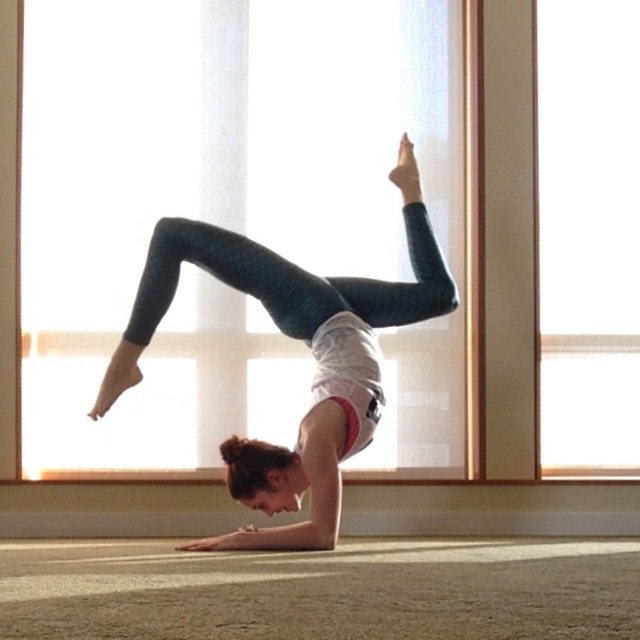Diary Of A Happy Yogi: Extrinsic vs. Intrinsic
Posted: April 1, 2015 at 11:06 am
By: Ashley Whimpey
To the majority, exercise is an extrinsic goal satisfier. While you may not enjoy the feeling of the bar producing callouses on your hands or the actual movement of pushing yourself from the ground over and over in a pushup, you have a goal in mind that makes it necessary. Sit ups may be your least favorite exercise, but you’ll do it because you want a stronger core more than you want to stop.
Yoga often begins the same way. New addicts are obsessed with being able to touch their toes to their heads or pull their legs up behind their necks. Slowly though, the “present mindset” begins to set in, and there is a shift to intrinsic motivation. The hour seems shorter and goes by much quicker. The sustained humming on your happy strings makes the time flow along, and your “Goal Reached” feeling set off like mad. The feeling lasts longer than the two seconds you spend in front of some streaky mirror somewhere noting how you finally have notable biceps when you twist your wrist up and hold your breath.
In a science context, this shift is attributed to a few things inherently great about yoga. Though many asanas (poses) and variations make up a yoga class, many of the same asanas are used again and again across all different yoga genres. This repeated practice of the same, or at least similar, poses and movements allows the practitioner to enhance his or her competence when it comes to exercising, agreeing with statements like, “I think I am pretty good at exercising” (Schneider & Kwain, 2013).
Other domains described by Schneider & Kwan include autonomy, or feeling like you have control over the way the exercise happens or like the activities are pleasant. Almost every asana has more than one variation, making it extremely autonomous in that respect. However, there is also a saying to, “Honor your practice,” and pause (or stop altogether) in a yoga class in order to give the body what it is asking for. To practice without attachment, meaning there is a silence to the voice usually saying we are not enough, is a tradition in yoga classes that puts regular practitioners in the line of fire to become more intrinsically motivated.
Further, exercising in order to be with others (relatedness), and exercising because of an understanding of the value of it (regulation), promote the intrinsic motivation that takes you to a state of thorough and complete satisfaction.
The movement of yoga, the breathing and being, all create a continuous meeting of a goal. Instead of a split second recognition of reaching a goal weight, which quickly diminishes into another goal to be set and worked toward, it’s being that you’re after. It’s being on the mat, or in the state of mind, or in the present moment as you bend and breathe and be.
Reference:
Schneider, M., & Kwan, B. (2013). Psychological need satisfaction, intrinsic motivation and affective response to exercise in adolescents. Psychology of Sport and Exercise, 776-785.



